#previsualization
Explore tagged Tumblr posts
Text

0 notes
Text
youtube
🚀Ready to revolutionize your filmmaking, advertising, and previsualization with cutting-edge tech? Here's what the magic of 3D Gaussian Splatting at TILTLABS can do for you! 🎬✨ 🌐3D Gaussian Splatting is a cutting-edge technique empowering us to craft realistic and immersive scenes by seamlessly blending multiple 3D models. Its applications include:
Creating smooth transitions between diverse environments.
Infusing depth and intricate details into your scenes.
Simulating intricate lighting and shadow effects.
Generating dynamic and interactive elements within your projects. With TILTLABS' 3D Gaussian Splatting, witness the creation of stunning results more efficiently and cost-effectively than traditional methods. Modify and customize your scenes effortlessly to align with your unique vision. For further insights into how our 3D Gaussian Splatting capabilities can enhance your projects, reach out to us at [email protected]. We're eager to connect with you and showcase some of our remarkable work.
#TILTLABS#3DGaussianSplatting#VisualInnovation#Filmmaking#Advertising#Previsualization#TechnologyInnovation#CreativeExcellence#unreal#previs#Youtube
0 notes
Text

Presently in the process of developing a product? Our team can bring your concepts to life without the need for you to spend time on product development, prototyping, or manufacturing. Pre-visualization allows you to visualize your design much earlier on in the development process which, in turn, can reduce overall development costs and help you get to market sooner.
To learn more, get in touch with us today! Call us on 📞 +91 9574 024 279 Mail us at [email protected] or Visit: https://www.designautomations.com/ . . .
#designautomation#design#automation#productdevelopment#prototyping#manufacturing#previsualization#visualization
0 notes
Text
Sunfyre, previsualization.
"Before The Throne" — House of the Dragon S2 | Previz Breakdown.
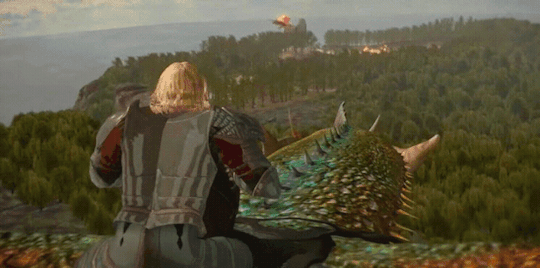
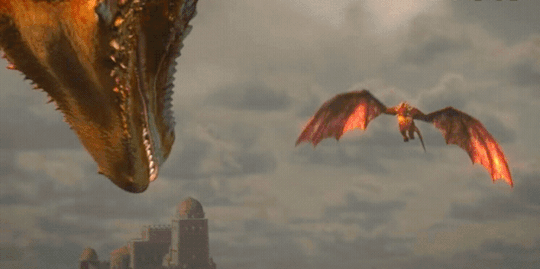
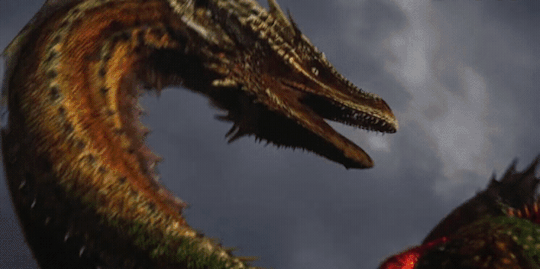
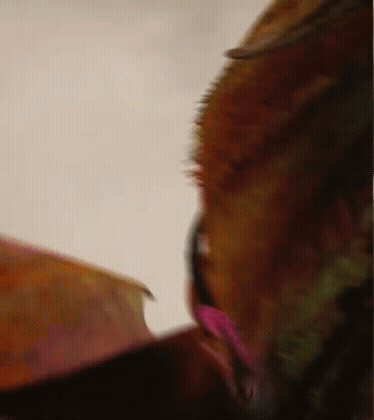
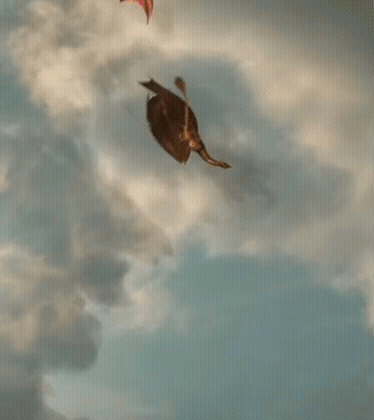
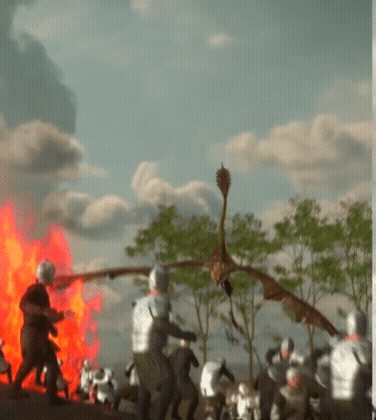

#house of the dragon#hotd#hotd season 2#sunfyre#dragons#team green#aegon ii targaryen#aegon the second#hotd aegon#beast#silverwing#dreamfyre#tessarion#vhagar#game of thrones#asoiaf#fire & blood#hotd dragons#king aegon#sunfyre the golden#gifs#hotd bts
110 notes
·
View notes
Text
Hi everyone, long time no see.
It's been a while since my last update here, and I wanted to take a moment to address this project's status and express my heartfelt gratitude to all of you.
As many of you may have noticed, Archivistbot has been inactive for quite some time now. I think it's time for me to officially acknowledge that I likely won't be going back to the project. This decision wasn't easy to make, but several factors have contributed to it. The primary reason was the changes to Google Colab's GPU usage limits, which make it impossible for me to continue training the model unless something changes. Additionally, at the time I'd been facing some profound mental health challenges that impacted my ability to dedicate time and energy to Archivistbot.
This blog was my first foray into alternative storytelling, and it has been an incredible journey. What started as a way to kill time and explore a new technology during the beginning of the widespread availability of LMMs quickly evolved into something much more meaningful. Through this project, I learned about alternative mediums for storytelling and fell deeply, madly in love.
I'm really thankful for the experience and for all of you who supported me throughout this. The friends and the community I found through Archivistbot have meant so much to me.
As I step away from Archivistbot, I want to direct you to a special project by my friend Mia. She's been a long-time fan of the early 2000s supernatural drama TV show Rearview Mirror, and is preparing to begin the endeavor of compiling all scripts and previsualizing material on her website. It's a labour of love and it would mean a lot to me if you checked it out. You can find her blog here.
Thank you all once again for your support, enthusiasm, and friendship throughout this project. It has meant the world to me, and I will always look back on this time with fondness.
I love you all.
-Mod
103 notes
·
View notes
Text
Okay, Matrix plagiarism case postscript
One thing I didn't answer is how she got the Wachowski's timeline wrong. I still don't know, but it appears she essentially shifted their lives back a decade
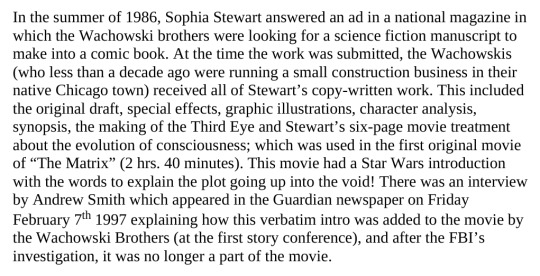
She says less than a decade ago they were running a construction business, but actually, working at a construction company is what they were doing in 1986. In 1976 Lana and Lilly were eleven and nine years old respectively. I can't explain why she messed this up, beyond having to age them up a decade for the story to work
But this screencap also brings up another thing she mentions repeatedly that I didn't mention - the smoking gun in her claim is that...the Matrix ripped off her words verbatim for its opening crawl. The opening crawl...to The Matrix.
Huh?
So her story is - and unsurprisingly the timeline here is jumbled, for instance, citing production interviews from 1997 when the film wouldn't enter production until 1998 - the original version of The Matrix contained a Star Wars-style opening crawl, and this was the most directly plagiarized part of the film.

She claims this opening crawl was, in fact, in the theatrical release of The Matrix and only removed when it came to home media, because she. Because she called the FBI on the Wachowskis for stealing the idea of opening crawls from her
The theatrical cut does differ from later versions slightly - most infamously the Wachowskis made the green color filter much more green in the second DVD release, to make it consistent with the style of the sequels - but if there was a opening crawl mandated by the studio, nobody but her has mentioned it, and I find it hard to believe critics wouldn't mention it.
Because this is Dark City. She's clearly confused The Matrix with stories about the studio's meddling with the 1998 film Dark City.
Dark City was the dystopian sci-fi film that had a opening narration explaining the whole plot foisted on it by the studio, and critics mentioned it. Basically every review mentioned it (some even suggest covering your ears or muting the film the first time you see it, at least until the Director's Cut removed it). Meanwhile, reviews of The Matrix praised its opening from the very beginning: how it drops you right into things and lets you find out about its world as Neo does. It's just not possible that the theatrical release has a opening crawl no one mentioned when I can pull up full comparisons of theatrical vs first DVD vs second DVD vs Bluray. Whatever story she read either was about Dark City, or was a Wachowski saying in passing "yeah the studio wanted us to add one but we didn't".
Another thing I didn't touch on is just how much it hypes her up as a untouchable genius of cinema. For instance, she claims to have come up with the effects of The Matrix in 1983 too
(one funny part is how little she brings up The Terminator at all? She just threw it in as a bonus I guess)

I looked up how they did the bullet time effect in particular and...it would have been impossible in 1983. It's not just high speed photography; it's entire banks of cameras, placed in the right place by computer previsualization, their sequence programmed, and with all the elements composited together by CGI. Even stylistically - the true creator of the effects cited Akira as a influence, and Akira the movie didn't exist in 1983. Neither did the type of Hong Kong action film that heavily influenced it. I guess it would be possible to write down "someone goes really fast and we depict it like they slowed down time", concepts of a plan etc
But like.

She's destined to be one of the most profound master writers of the 21st century. This is a book proving she's never written anything. It has a pitch for The Third Eye, it has a second film treatment tacked on at the end, and it has copyright registrations for her sequels to Terminator and The Matrix. M. Night Shyamalan's character in Lady in the Water was destined to be a great writer too, but he actually wrote a book. He didn't put out a book with a decades-old synposis that was never finished & reams of legal documents and a bio saying, I'm one of the greatest authors of all time. Because who needs writing when you have destiny, God, and the ancient superrace living in the Pyramids on your side?
This is my for real last post on this since I ended up just depressed about it in the end. I think the worst part is, she knows she lost. But she still goes to the press telling a story she knows isn't true, and people believe her. Some of it is transphobic - "stop saying it's a trans allegory when they stole it"; some of it runs with the Christian oppression narrative (full disclosure, I was inspired to look for her book again bc while looking up another crank, I saw an interview with her in the sidebar of a religious website); but a lot of it is just people who innocently want it to be true.
One of the few pieces debunking her story is on a website called Black Excellence - it doesn't even have a byline - said this:
"There are many people, especially Black people, who wanted the story to be true. It symbolized a Black person, especially a Black woman, finally winning against the system. When Sophia Stewart spoke about how mainstream media would not give her the time of day because almost all of them were owned by Warner Brothers, some Black media embraced her. Blogs spread her story, especially the initial story on Globe that contained errors about the case.
"But the story is not true. Sophia Stewart did not become the richest Black person in the country. But that did not deter her from going on several shows and publications to tell her story."
She took advantage of people's urge to root for the underdog against a corporation - and seized on a lack of mainstream coverage to claim her story was being suppressed. But it just isn't true. Also yeah she ridiculously claims that Warner Bros owns every news website and newspaper and that's kind of funny I guess. Well, that's it. I'm never doing this again
72 notes
·
View notes
Text
I handmaded an A4 metric chart page template.
(because I'd like to design stickers and stuff at some point)
Very much handmade so it's not pixel perfect but it's nitid af.
These are some of the previsualizations in centimeters and inches. Under the cut are all the transparent versions.
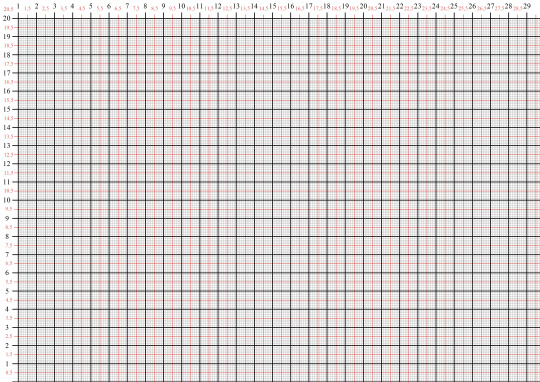
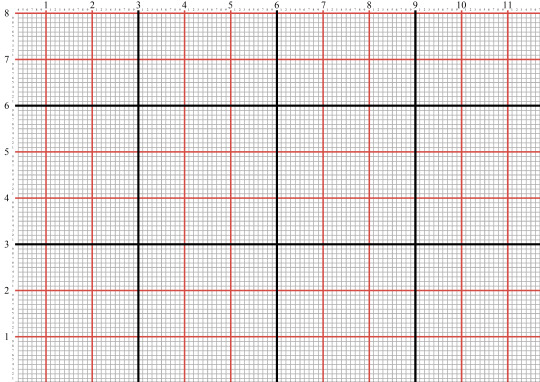
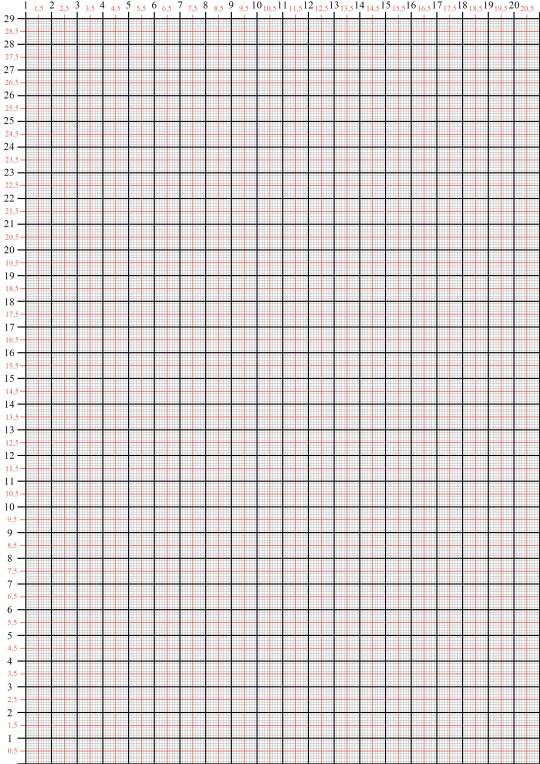
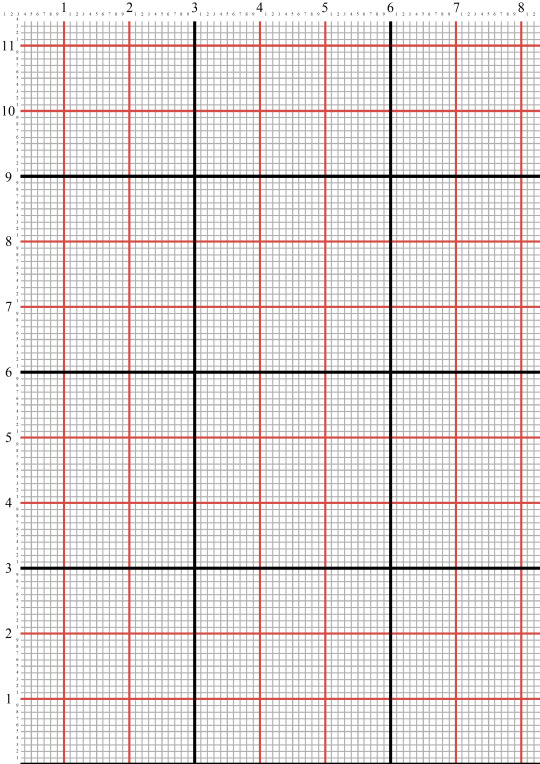
Remember to click the image and open it in another tab on desktop to download the correct size.
I just realized they are hard to see if you are on dark mode lol, sorry.
Horizontal cm
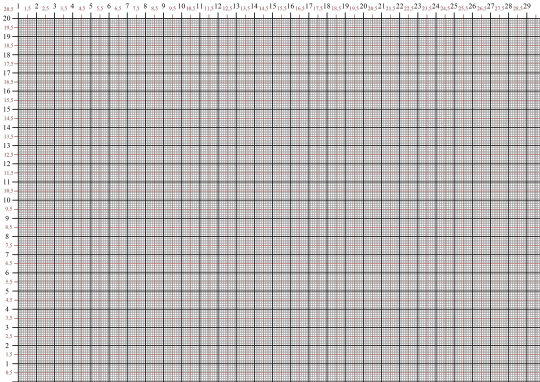
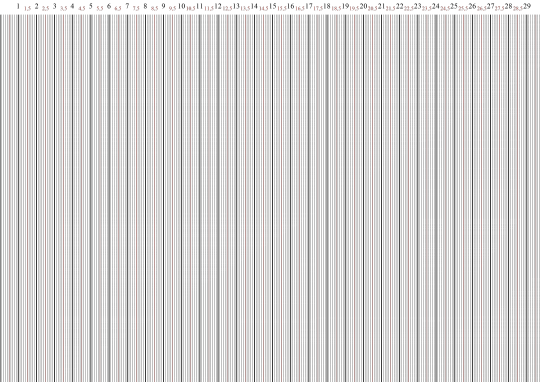
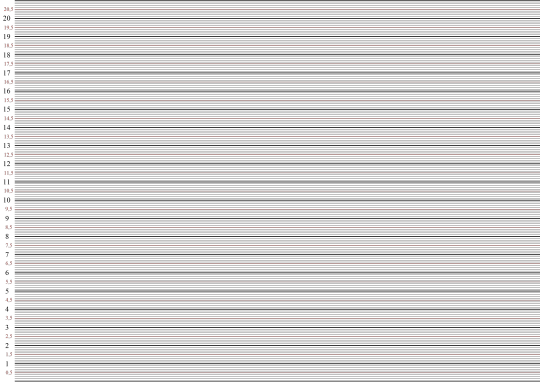



Horizontal in
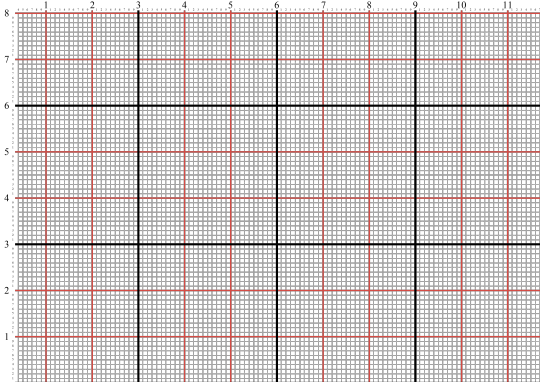
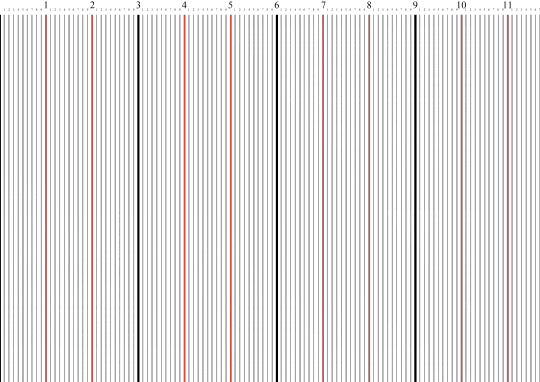
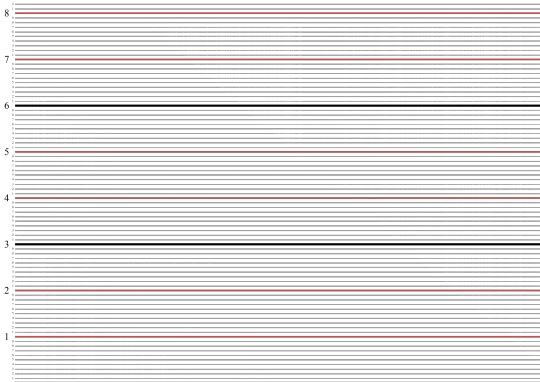
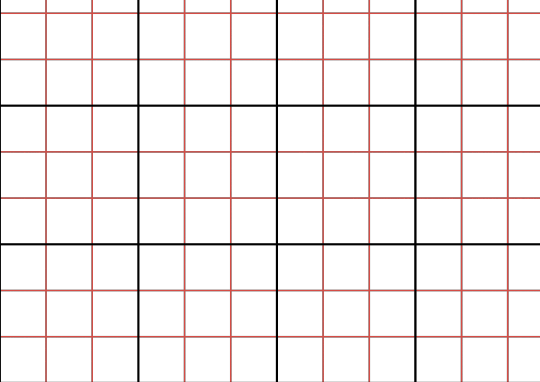
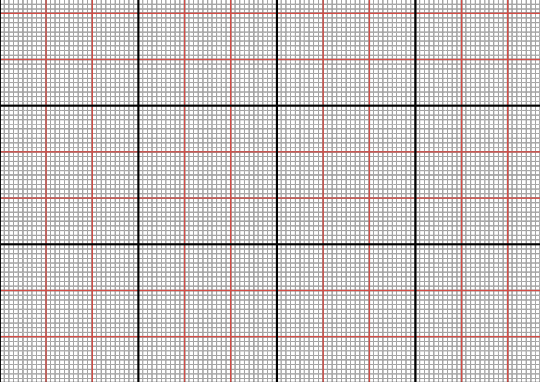
Vertical cm
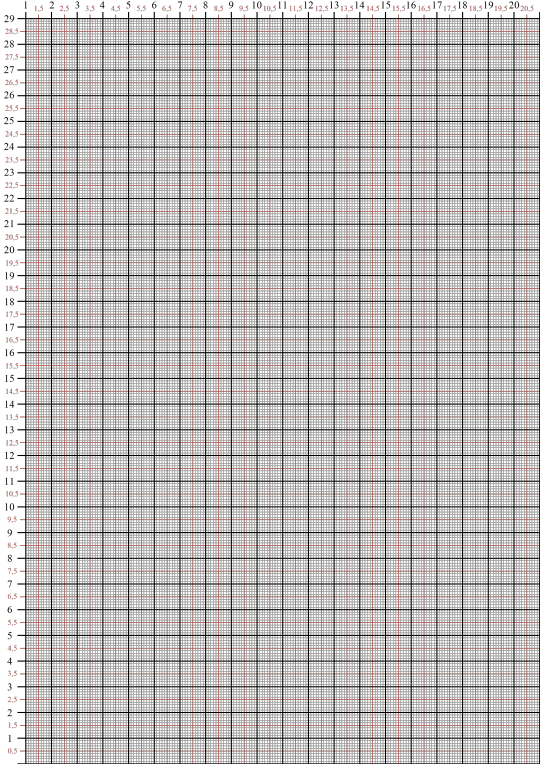
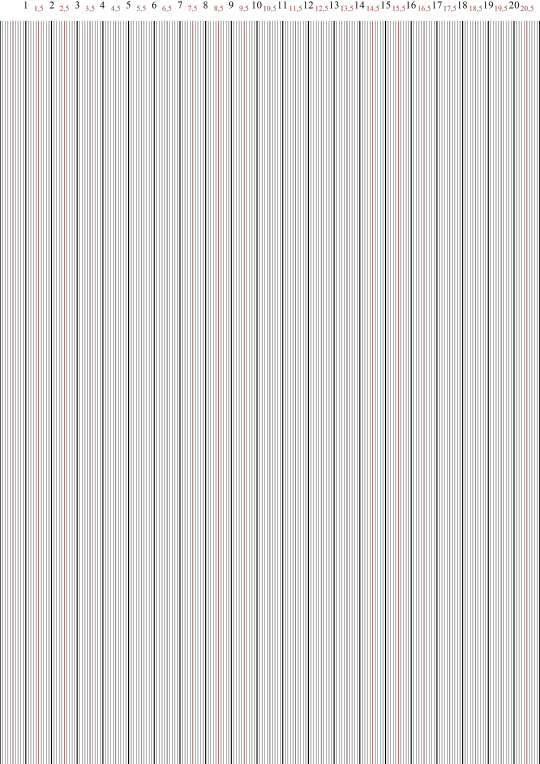
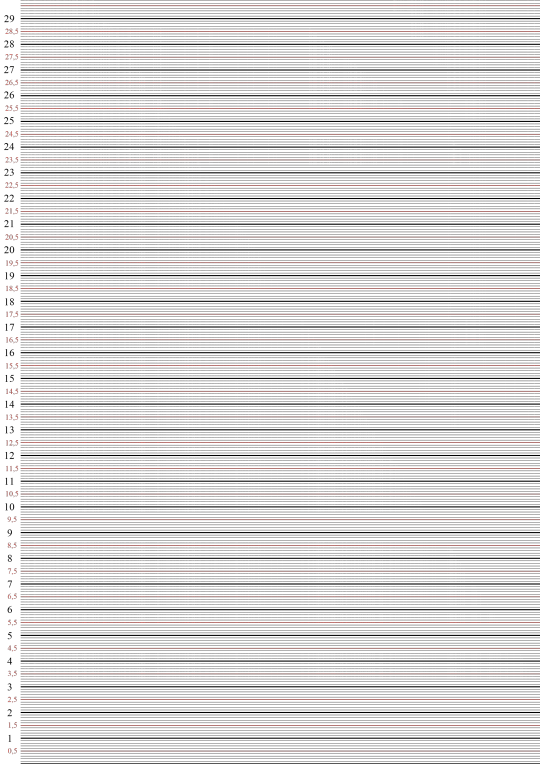

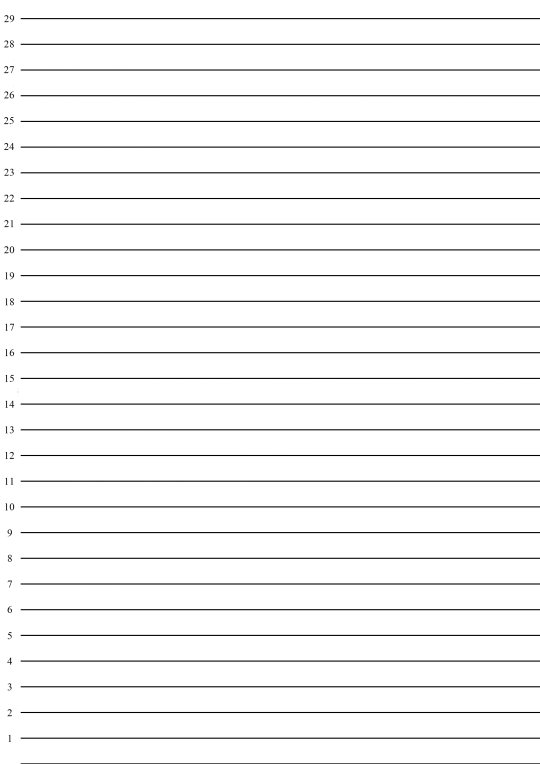

Vertical in
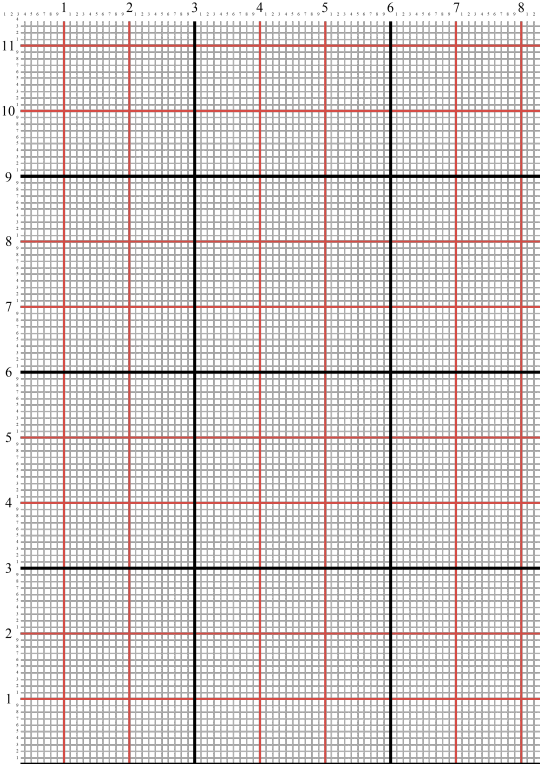
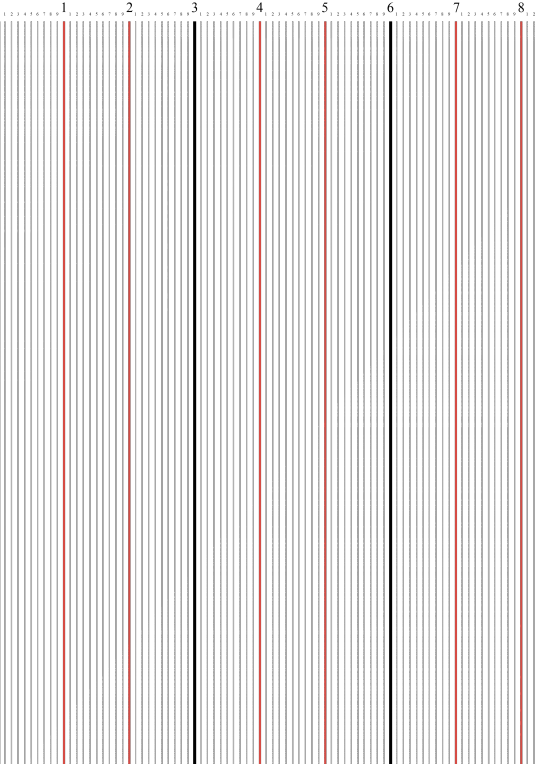
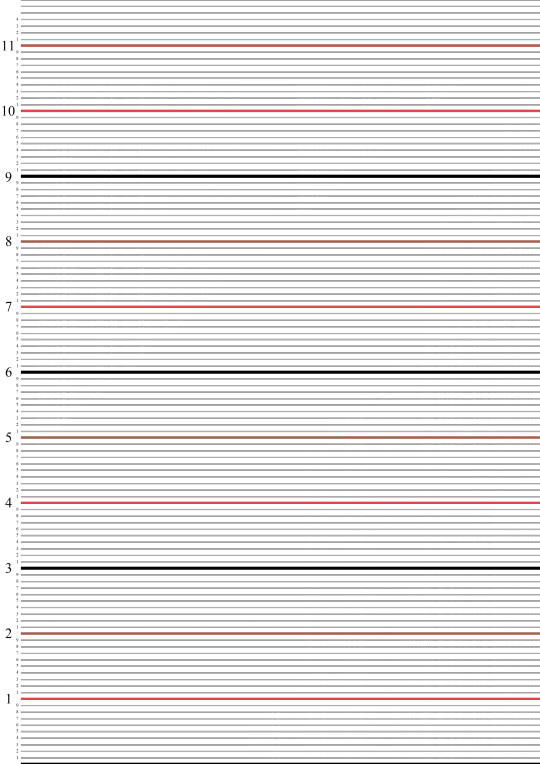
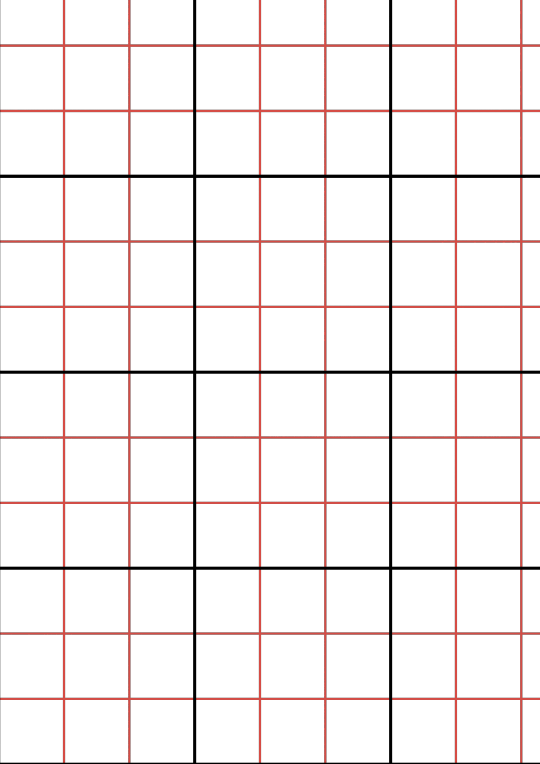
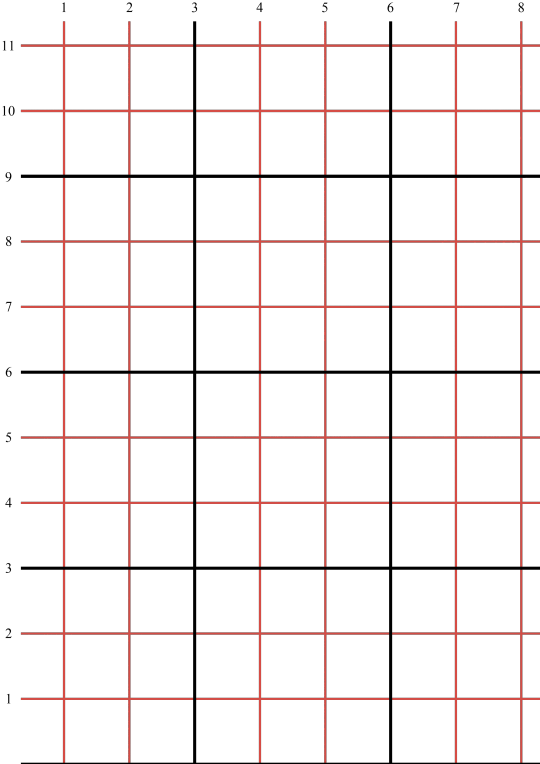
25 notes
·
View notes
Text


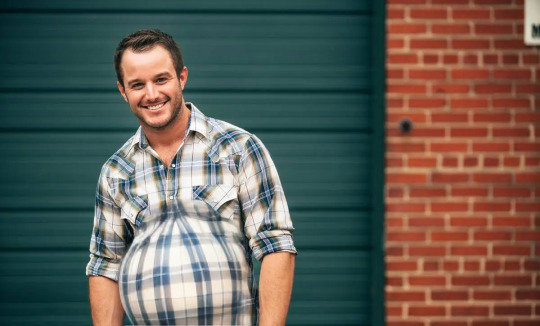


So unfortunately, Easton and Brett had to drop out of the Competition this year to deal with some crime and political issues at the VORE Police Force.
But here are some previsualizations of what they would have looked like!
24 notes
·
View notes
Text
Whoops! - Episodes 4 & 5
Can you believe that there are 5 episodes up now?! Sorry about missing last week's episode. Life happens, yanno? Here's the words you need to know from episodes 4 and 5.
Episode 4 - Joey Filipiak
Giallo Films
A genre of Italian cinema that combines thriller and horror elements in a murder mystery story. Popular in the 1960's and 70's
Previs
The process of visualizing a scene before the production (short for Previsualization).
Episode 5 - Ella Cesari
Storyboard
A graphic organizer used in the previsualization process to identify key moments in sequence.
Toon Boom
An animation software.
+ Bonus
Vampire Clay (2018)
youtube
Phantom of the Paradise (1974)
youtube
#television#movies#video games#podcast#spotify#film#not one right way pod#animation#3d animation#3d animator#phantom of the paradise#vampire clay#Youtube
5 notes
·
View notes
Text
Scale Model I Did For My Play
A physical mock-up of Your Home (now a web serial here: mariowritesforyou.com)’s set design I did.
This was my last project for college. I wanted light projections to light up the whole stage with patterns I had designed. To previsualize this I clipped on the printed patterns to the cardboard model. There you can see the tiny audience seats and Meli’s big chair.
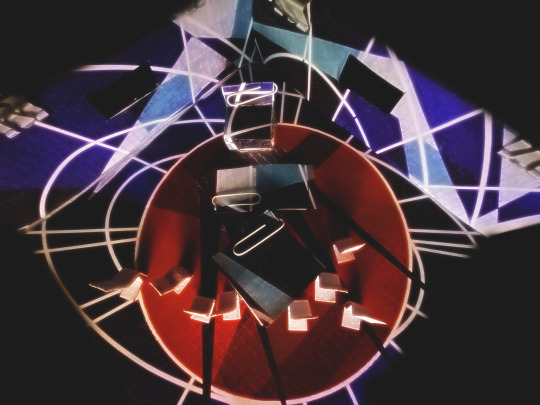
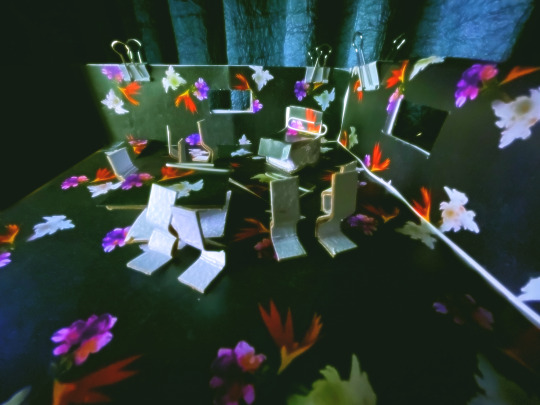
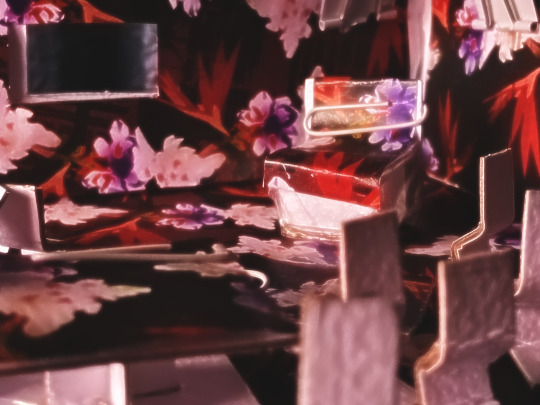
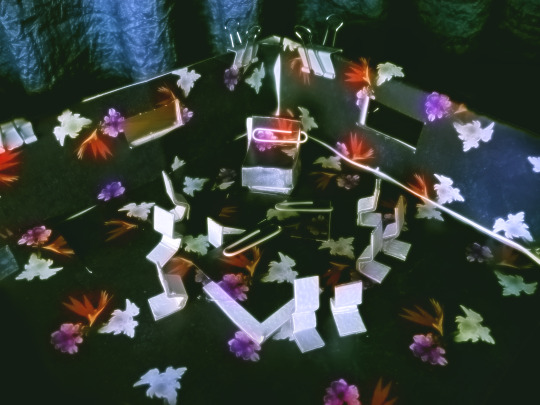
#yourhome#writeblr#writers on tumblr#theater#set design#mariowritesforyou#romance#drama#creative writing#your home
12 notes
·
View notes
Text
Unit 3 Reflective Journal - Lim Lin Year 1 Production Arts for Screen
This unit introduced us to storyboarding and previsualization. The same script was given to everyone, and we had to break it down and create quick thumbnails for each scene. For my storyboard, I wanted to go for a more comedic tone for most scenes.
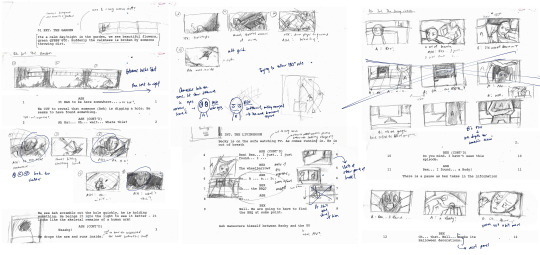
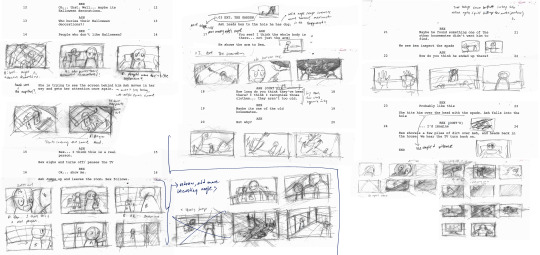
After the first rough sketches, I noticed many issues with perspective and staging in the shots drawn. Moreover, when looking at things from afar, many of the shots looked staged or repetitive. A bigger issue was the 180-degree rule which I struggled with, making some panels hard to follow.
For the tutorials, we were given quick exercises to draw different frames from various films in minutes using Photoshop. The horizon line and perspective were important to place subject matter in the frames correctly, and the goal for these exercises was to draw fast and to not go into detail. As I am slow at drawing, I struggled to do the first few exercises as the thumbnails were not clear enough and kept redrawing parts, then ended up not having enough time to finish.

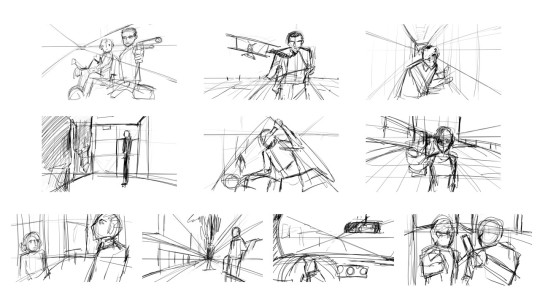
The next week, we focused on figure drawing. Emphasis was placed on gestures rather than the anatomy of the models shown on the screen. We were reminded frequently to draw with the line of action and avoid focusing too much on the muscles. Using the line of action, a figure can be drawn faster and quicker with energy and movement.
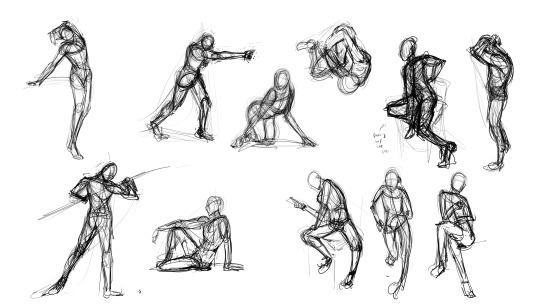
The drawing gets built up with structure and form and supported by paying attention to the areas of tension and structure of the form. An advice that helped me a lot was the guideline that the angle of the shoulders and hips should be the opposite of each other, though there were some photographs which had the angles hard to identify. Drawing from the feet upwards also helped me balance the figure more but it is still hard to achieve.
We also did another gesture drawing exercise traditionally using charcoal. Using a physically larger canvas gave me a clearer idea of how to make poses look less rigid.

After more practice, I began to work on the storyboard drafts. By drawing on larger spaces on the paper, I was able to draw the panels clear enough to trace on Photoshop.

For the first scene, to make the monologue less repetitive, made the camera zoom in and out of Ash more often. However, the part where he puts down the spade and picks up the arm seems out of place. For the final animatic, two more panels are added in between to create a better flow.

On paper, the walking shot from his point of view seemed okay but after adding it to premiere pro I realised the timing was too short so I added another panel of him walking to slow the pace down to create suspense. For the last few shots of this scene, I wanted to make the angles more dynamic. The scene of him dropping the arm out of fear is titled to show his shock and fear, and the part where he runs into the house is shot from a wide high vantage point to make him appear smaller as if overwhelmed by the environment.
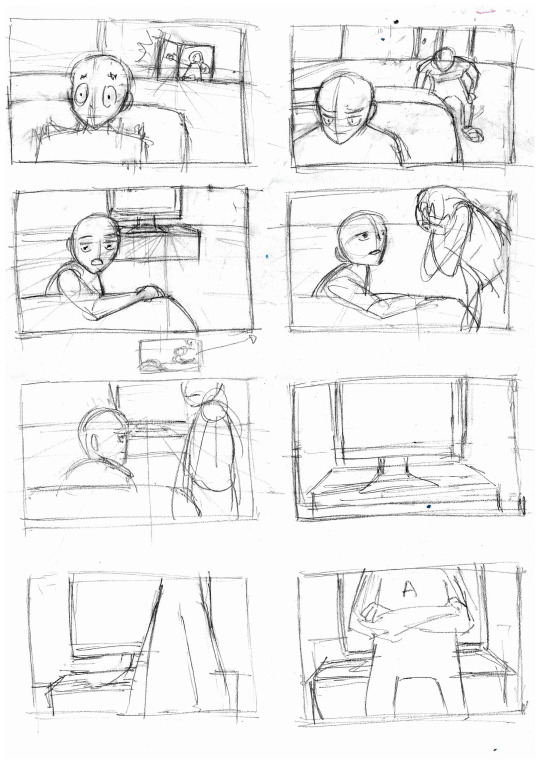
The next scene has more comedic lines and mainly focused on the two character's dialogue so the compositions are flatter and closer shots are used to focus on their upper body language and facial expressions.
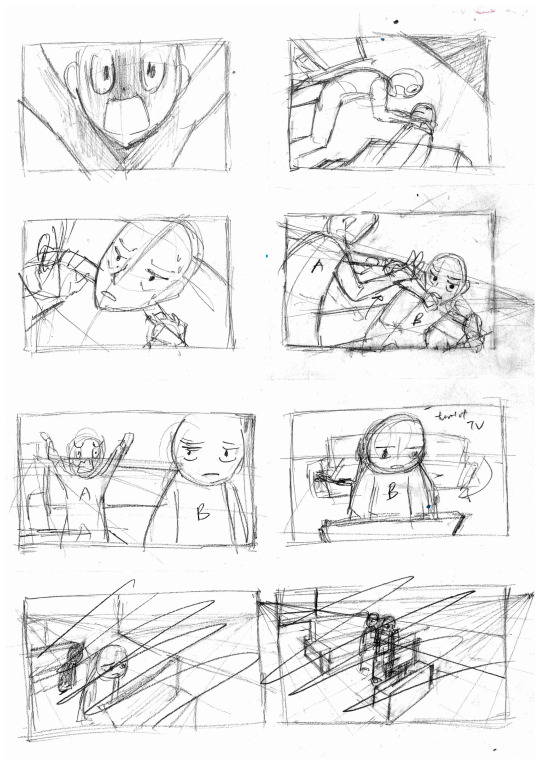
The exception of this was the point when Ash desperately pleads Bex to take him seriously as she seems indifferent towards the morbid idea that a dead body is in their garden.

The scene ends with Ash dashing out of the house to show Bex what he discovered.
For the third scene, I already started on the animatic and cleaned the previous scenes digitally, so I did not have time to fix the rough storyboards on paper and instead worked on the remaining panels on Photoshop. As such, I also included the formatted storyboard for the last scene in this blog.
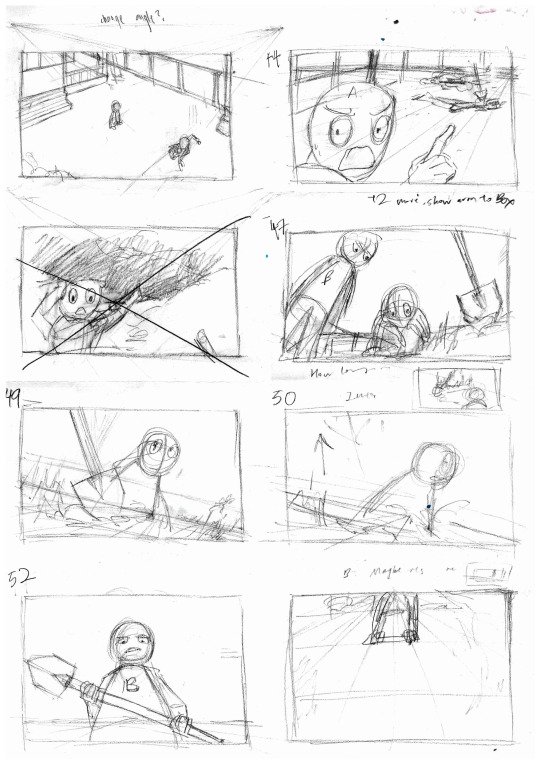

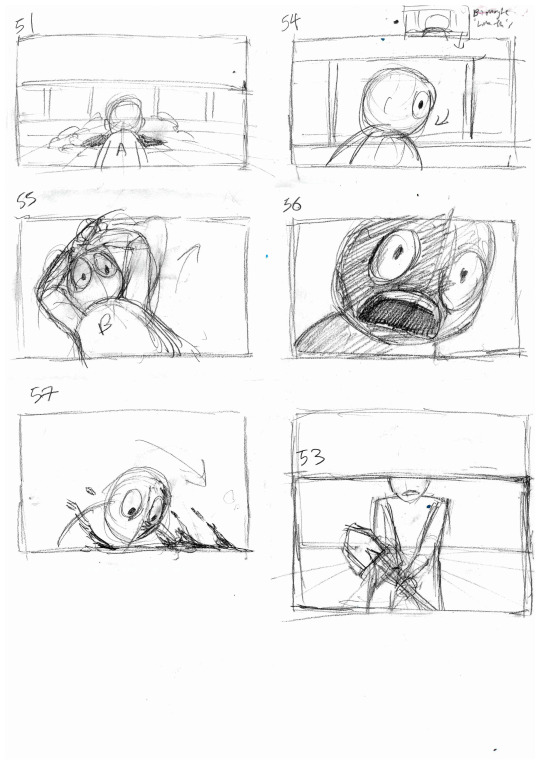
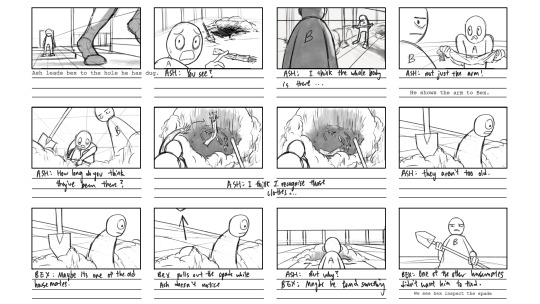
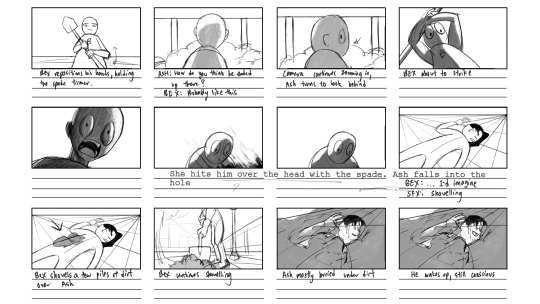
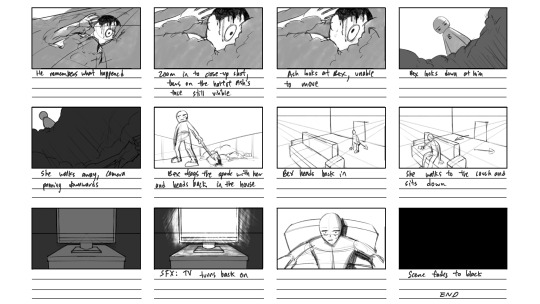
I tried using as many dynamic angles as possible as well as sharp shapes with the spade. I didn’t really use many references from other films for this unit but did so for the last scene as I needed to learn how to create suspense and action. Because the story is mainly lighthearted, I decided to use implied violence. Thus, the part where Bex hits Ash with the spade was referenced from this scene in American Psycho.
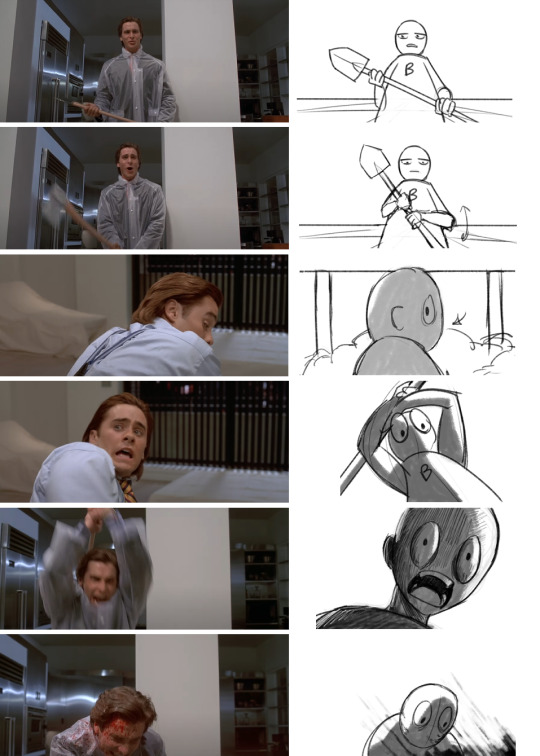
I thought this worked well with the storyboard as it follows a similar context of an oblivious person not aware of the murder setup of the more dominant figure, in my case Ash and Bex respectively.
For the hand-in, we were given a brief introduction to premiere pro as it will be the video editing software used for the animatic and previs. The main thing to keep in mind was the organisation of files as it is easy to lose media when transferring files across devices, which I experienced multiple times because of wrong file locations.
The Previs is to be made using blender as there are several things to take note of for the process to be done quickly. The shots made in 3D are meant to be throwaway art that is easy to make, so we were told to keep things simple and only model what is visible. What should be focused on is the shot's composition, clarity and timing. Like premiere pro, it is also good practice to make collections and to keep things in groups. Every single shot is a separate blender file, and the timeline is the number of frames in each shot.
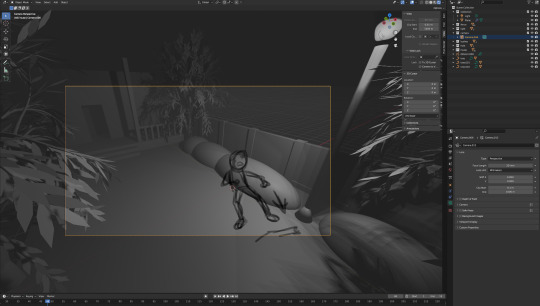
For most scenes, I used a focal range between 35-15mm for more dynamic angles. I also used the sapling tree gen addon for the leaves, which helped a lot to make the lighting more effective for the setting of a garden.
The result looked like this when comparing the previs with the animatic for scene 1. To create the establishing shot, I used after effects and blender keyframes then imported the video files back into premiere pro.
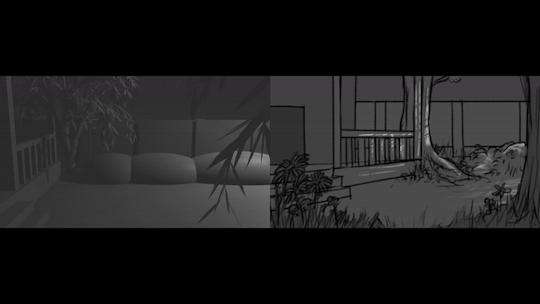
Animatic: https://artslondon-my.sharepoint.com/:v:/g/personal/l_lin0320231_arts_ac_uk/EY_ypRbvIwFBki4taSGtOaIBNeLFT2Ro5l1go4EiA1VqNg?e=9amh7F
Previs: https://artslondon-my.sharepoint.com/:v:/g/personal/l_lin0320231_arts_ac_uk/EemLgbhE-29NlVcD5_AGvS0Bhi1cmr7oJtFlUNFCGOR07Q?e=SW38pW
In case the OneDrive links won’t open, I have also uploaded them below on this blog.
Overall, If I had managed my time better, I would have wanted to use more references and created character designs to distinguish the two figures better. On the other hand, I felt that this unit helped me to address a big problem in my work which is my drawing speed and clarity which I think had improved over the month. I hope I would be able to work more efficiently in future animation units.
2 notes
·
View notes
Text
i watched some kfp3 previsualization stuff from when i'm assuming they were working with the characterization of li being more of a stern Straight Man or something and i am once again kinda Sad that they ultimately didn't go in that direction bc the prospect of him not being on board with all this kung fu stuff really opens the door for more interesting character depth imo
like the gist i'm getting from this is that he is discouraging po from kung fu simply bc 'pandas don't Do That' but if it turned out to be based actually in a fear of losing po again, that po is putting himself in danger in this position and with this line of work, idk
also love the idea that mr. ping himself also had A Time to grapple with that as well but by the time of the third movie is long past it, so that could give those two something to Talk About
#masha rambles#idk man#as always i still enjoy this movie for what it is but mAN. it is fun to go 'what if' with it bc some of the earlier ideas were#Good........
3 notes
·
View notes
Text
I've realized two mayor issues with my art: 1) I don't previsualize what I'm drawing before doing it which makes everything end up looking wrong and 2) I forgot hips exist
#luly talks#i mean i do have like. i guess some degree of aphantasia#I just dont see like i see the real world most of the time i have like tunnel vision
2 notes
·
View notes
Text
Creating with AI: What It Means for 3D Animators Today

The rapid advancement of Artificial Intelligence (AI) has triggered both excitement and anxiety across creative industries. In animation, particularly 3D animation, AI is no longer a futuristic concept—it’s here, shaping workflows, generating assets, and even influencing artistic decisions. But this progress has sparked an important debate: is AI a threat to the role of 3D animators, or is it a revolutionary tool that enhances creativity and productivity?
Let’s explore both sides of this conversation, keeping in mind the real-world shifts, the tools already making a difference, and the outlook for aspiring professionals entering the industry today.
The AI Invasion: Changing How Animators Work
AI’s impact on 3D animation has become visible in multiple stages of production:
Motion Capture & Animation: Tools like DeepMotion and RADiCAL AI generate lifelike human movement from simple video input, replacing the need for expensive motion capture studios.
Environment & Asset Generation: AI-powered platforms like Promethean AI and NVIDIA's Omniverse can auto-generate 3D environments and textures based on textual prompts or reference images.
Rigging and Cleanup: Traditionally time-consuming processes such as rigging characters or cleaning mocap data are now being sped up or automated entirely using machine learning.
Lip Sync and Facial Animation: AI tools like Replica Studios and Facegood offer realistic voice-to-lip synchronization, reducing manual keyframing effort.
These advancements are helping creators meet tight deadlines, handle repetitive tasks more efficiently, and prototype ideas quickly.
So, Is It a Threat?
The fear that AI will replace human animators isn’t unfounded, especially when tools can now automate what used to take hours or days. However, there are crucial limitations:
Lack of Emotional Nuance: AI-generated animations often lack the storytelling finesse and emotional depth that human animators bring to a scene.
Creativity is Still Human: AI cannot “imagine” in the same sense. It requires input and context, which only creators provide.
Style Consistency: AI struggles to maintain visual consistency over longer sequences, which is crucial in narrative animation.
Ethical and Legal Barriers: AI-generated content is raising new issues around copyright, authorship, and creative integrity, requiring human oversight.
A May 2025 article from Cartoon Brew highlighted that while AI tools have become essential in pre-visualization and asset generation, studios continue to rely on trained animators to execute final scenes with the precision and narrative nuance that AI can't replicate.
The Case for AI as a Tool, Not a Replacement
When viewed as a complement to artistic skill rather than a competitor, AI becomes a powerful ally for 3D animators:
Speed + Precision: AI accelerates the animation pipeline, allowing artists to focus on creative decisions and refining aesthetics.
Lower Barriers to Entry: Beginners can now produce complex scenes with fewer resources, thanks to AI assistance.
Previsualization and Iteration: Artists can iterate faster and pitch better ideas using AI mock-ups and automated previews.
Inspiration and Experimentation: AI offers variations that artists might not have considered, sparking innovation.
For instance, major studios like Pixar and DreamWorks are already using AI in subtle, supportive ways—predictive rendering, scene optimization, and dynamic simulations—without compromising artistic control.
Rising Demand for Hybrid Talent
With the integration of AI into the animation pipeline, there’s an emerging need for “hybrid artists”—professionals who understand both creative and technical dimensions. This includes knowing how to use AI tools without depending on them blindly.
Educational institutions and training programs are responding quickly. An Animation course in Bengaluru, for example, now often includes modules on AI-assisted workflows, digital sculpting, and real-time rendering. This reflects the growing need for curriculum updates to match industry demands.
The best animators of the future won’t just be artists—they’ll be tech-savvy storytellers who can collaborate with AI rather than compete with it.
Latest AI Tools Gaining Traction in 3D Animation
Here are a few tools and platforms making headlines in 2025:
Kaiber.ai: A creative AI that transforms simple sketches or text prompts into stylized 3D animations. It’s being used heavily by indie creators and YouTubers.
Cascadeur: A physics-based animation software with AI posing and auto-trajectory prediction, allowing users to create realistic movement without motion capture.
Runway ML (Gen-3): While mainly known for video, its AI model now supports 3D texture and movement generation, influencing pre-vis and VFX pipelines.
Sora by OpenAI: Expected to integrate 3D animation in the near future, Sora’s text-to-video capability is already reshaping how concept videos and animatics are built.
These tools are particularly beneficial in pre-production, rapid prototyping, and budget-friendly animations.
The Role of Human Animators in the AI Era
While AI is making animation more efficient, it doesn’t replace the need for a human vision. Consider what human animators bring to the table:
Storytelling Depth: Knowing where to exaggerate motion, where to hold a moment, and how to communicate emotion through subtle actions.
Art Direction: Choosing color palettes, camera angles, and stylized aesthetics—decisions that shape the final output’s emotional impact.
Cultural Relevance: Animators incorporate cultural context, humor, and symbolism that AI currently cannot grasp.
Studios continue to invest in human talent—not just for execution but also for leadership and creative direction. In fact, hiring for roles like AI pipeline artists, creative technologists, and animation leads has increased by over 25% in the past year, according to a 2025 LinkedIn Insights report.
Empowering the Next Generation
As we move further into this AI-assisted creative era, it’s essential that emerging animators understand both the risks and rewards. Rather than fearing displacement, animation students today should focus on:
Mastering fundamentals of movement and design
Learning to collaborate with AI and automation tools
Staying updated with software and workflow trends
Building a unique style and artistic voice
Training programs are adapting quickly. From hands-on AI workshops to simulation-based VFX training, institutes are reshaping their curricula to prepare students for hybrid roles.
In regions where the animation and VFX industry is rapidly expanding, students have a unique advantage. For instance, taking a 3D animation course bengaluru can open pathways not just in gaming and film, but also in AR/VR, architecture, and advertising—sectors increasingly relying on AI-powered visual storytelling.
Final Thoughts: A New Era of Animation
AI is neither a villain nor a savior—it’s a tool. And like any tool, its value depends on who wields it.
For 3D animators, the arrival of AI means faster production, lower costs, and access to a broader creative canvas. But it also means staying relevant through constant learning, adaptability, and preserving the human element in storytelling.
Aspiring animators should embrace AI not with fear, but with curiosity. With smart training, real-world experience, and artistic passion, they’ll not only thrive—they’ll help shape the future of animation itself.
1 note
·
View note
Text
04/06/2025 The Boy, the Mole, the Fox, and the Horse (2022): Finding Our Way Home in the Snow
Winner of the Oscar for Best Animated Short Film, The Boy, the Mole, the Fox, and the Horse is adapted from Charlie Mackesy’s best-selling illustrated book. Co-directed by Peter Baynton and Mackesy himself, the film brings to life a heartwarming journey through snow, guided by gentle ink-like lines and a warm, watercolor palette. Although it is set in a snowy landscape, the film feels like a cup of hot chocolate in winter—honest, comforting, and filled with love through the quiet interactions among the four characters.
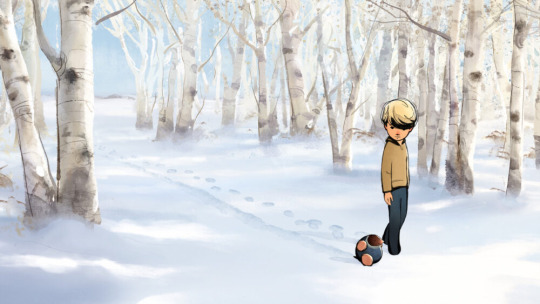
On the surface, the story is about a lost boy trying to find his way home. But beneath it lies a deeper emotional journey of healing, of being lost and rediscovering hope. Each character represents something symbolic: the cake-loving mole embodies childhood innocence and kindness; the quiet, honest fox reflects the reality of life; the white horse, who longs to fly, is a symbol of dreams. And the little boy—walking through the snow—is a reflection of ourselves. We don’t need to have all the answers; we just need to remember what love looks like to find our way home.
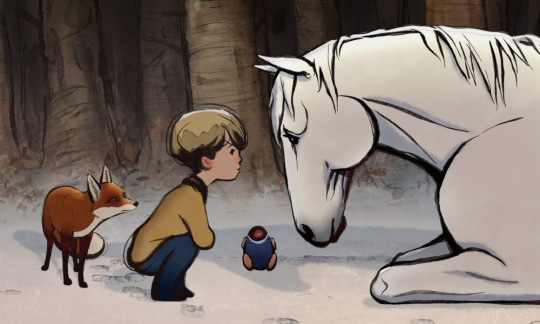
Visually, the film stays true to the hand-drawn style of the original book. Animated with care using TVPaint for the characters and Photoshop for the backgrounds, then composited with After Effects and Nuke, the final result is both traditional and timeless. The filmmakers drew inspiration from Impressionist snow landscapes and the natural scenery of Northern England, creating a poetic world filled with soft lighting and emotional depth. The endless snow isn’t just a backdrop—it becomes a symbol of life’s unpredictable journey.
The story never explicitly talks about grief or despair, but the characters face confusion, loneliness, and setbacks—only to rise again through kindness and love. There are no dramatic plot twists, but the simple words and visuals awaken a deep longing for tenderness, connection, and hope. Like this scene: “Sometimes I worry you’ll all realise I’m ordinary,” says the boy. “Love doesn’t need you to be extraordinary,” replies the mole. It’s hard not to tear up at such sincere, gentle truths—we all need that kind of unconditional love.
It’s also worth noting that the film was created by a team of 120 artists from over 20 countries. The animation avoided CG previsualization, staying committed to traditional 2D drawing techniques. This dedication to honoring the book’s essence gives the film its soul. Looking at recent trends in animation, from big studio productions to small team shorts, we see a growing return to hand-drawn styles or thoughtful blends of 2D and 3D. As a concept artist and an animation lover, I find this shift deeply encouraging. I’ve always believed that hand-drawn animation can express a kind of sincerity and nuance that 3D sometimes cannot—and it’s exciting to see more creators returning to this heartfelt approach.
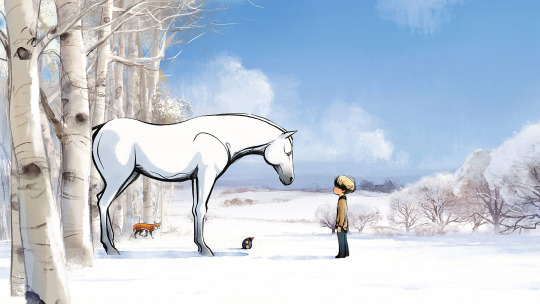
All in all, The Boy, the Mole, the Fox, and the Horse doesn’t try to give us all the answers. Instead, it offers a quiet courage—the strength to keep walking forward. Even when the road ahead is a blank, snowy field, as long as we carry kindness and remember the power of love, we will never truly be lost.
Reference
Zahed, R. (2022). Animating an Amiable Fable in ‘The Boy, the Mole, the Fox and the Horse’. [online] Animation Magazine. Available at: https://www.animationmagazine.net/2022/12/animating-an-amiable-fable-in-the-boy-the-mole-the-fox-and-the-horse/.
www.bbc.co.uk. (n.d.). The Boy, the Mole, the Fox and the Horse. [online] Available at: https://www.bbc.co.uk/iplayer/episode/m001gn7t/the-boy-the-mole-the-fox-and-the-horse.
0 notes
Text
Virtual Production & VFX: The Future of Real-Time Filmmaking

The world of filmmaking is undergoing a revolutionary transformation, driven by advancements in Virtual Production and Visual Effects (VFX). These technologies are not just enhancing visual storytelling—they're completely reshaping how movies, TV shows, and digital content are produced. In today’s real-time filmmaking landscape, traditional green screens are being replaced by immersive LED volumes, and post-production is blending seamlessly with live-action shoots.
Whether you're an aspiring filmmaker, animator, or VFX artist, now is the ideal time to explore cutting-edge VFX Prime Courses in Udaipur and professional VFX Film Making Courses in Udaipur to become part of this fast-evolving industry.
What Is Virtual Production?
Virtual Production combines computer-generated imagery (CGI), game engines, real-time rendering, and on-set technologies to enable filmmakers to visualize and capture scenes in real time. Popularized by productions like The Mandalorian and Avatar: The Way of Water, virtual production allows directors and cinematographers to interact with digital environments as if they were real physical sets.
Key Components:
LED Volume Walls: Massive, high-resolution LED screens replace traditional green screens, showing pre-rendered 3D environments during live filming.
Real-Time Rendering Engines: Tools like Unreal Engine render graphics in real time, letting filmmakers adjust lighting, environment, or camera angles instantly.
Motion Capture & Tracking: Actors' performances are captured and applied to digital characters or environments in real time.
The Role of VFX in Real-Time Filmmaking
While traditional VFX was mainly a post-production process, real-time VFX is changing the game. Artists now collaborate closely with the director from the very beginning, making visual effects an integral part of the pre-production and filming stages.
How VFX Supports Virtual Production:
Previsualization (Previs): Helps plan complex scenes before the camera rolls.
Set Extensions: Adds digital elements to enhance physical sets.
Real-Time Compositing: Combines live footage with CGI elements instantly.
Digital Doubles & Creatures: VFX teams create lifelike characters and creatures that interact with live actors.
If you're looking to build a career in this domain, enrolling in VFX Film Making Courses in Udaipur can provide hands-on experience in tools like Unreal Engine, Maya, Nuke, and more.
Tools and Software in Virtual Production & VFX
Aspiring VFX artists and filmmakers must master a suite of tools to thrive in this field. Here are some industry-standard platforms taught in most VFX Prime Courses in Udaipur:
Unreal Engine – Real-time rendering and virtual production backbone.
Autodesk Maya/3ds Max – 3D modeling and animation.
Adobe After Effects – Compositing and motion graphics.
Nuke – High-end node-based compositing.
Blender – Free, powerful tool for VFX and animation.
Motion Capture Systems – For capturing real-time actor performances.
These tools empower creatives to design rich, interactive environments and seamless effects with cinematic quality.
Advantages of Virtual Production in Filmmaking
1. Faster Production Timelines
Directors can see and adjust scenes in real time, reducing the need for lengthy post-production.
2. Improved Collaboration
Creative teams—from art directors to VFX supervisors—can work together on set with instant visual feedback.
3. Enhanced Creativity
Virtual environments can be changed on the fly, encouraging experimentation and innovation.
4. Cost Efficiency
Though the initial setup may be costly, it reduces long-term costs by eliminating location shoots, reshoots, and extensive post-production.
5. Safe & Controlled Sets
Filming in virtual environments ensures more control over lighting, weather, and safety, especially post-pandemic.
Learning VFX & Virtual Production in Udaipur
As the demand for skilled VFX professionals grows, the need for formal training is more important than ever. Luckily, institutions offering VFX Prime Courses in Udaipur and VFX Film Making Courses in Udaipur are now equipping students with the latest technologies, real-time production workflows, and portfolio-building opportunities.
What to Expect from a Quality Course:
Hands-on Training: Real-time projects using industry-standard software.
Industry Mentors: Learn from VFX professionals with real-world experience.
Portfolio Development: Build a showreel that showcases your creative and technical skills.
Collaborative Projects: Simulate real film production environments.
Placement Support: Career guidance and internship opportunities in studios across India and beyond.
These programs are ideal for students from any background—whether you're a tech enthusiast, visual artist, or aspiring director.
Career Opportunities in Virtual Production and VFX
The film and media industry is constantly evolving, and virtual production is becoming a standard part of high-budget and even indie filmmaking. Here are some roles that are in high demand:
VFX Artist
Virtual Production Supervisor
Previs Artist
Environment Artist
Compositor
3D Modeler/Animator
Real-Time Technical Artist
Motion Capture Technician
From blockbuster movies and streaming series to advertisements and corporate films, the demand for skilled professionals is higher than ever.
The Future Is Real-Time
Virtual production and real-time VFX are no longer “futuristic” ideas—they are the new reality of filmmaking. What once took months in post-production can now be done on set, empowering creators to work smarter, faster, and more imaginatively.
For students and professionals in Rajasthan and beyond, pursuing VFX Prime Courses in Udaipur or advanced VFX Film Making Courses in Udaipur is the gateway to entering a future-proof career in digital entertainment.
0 notes